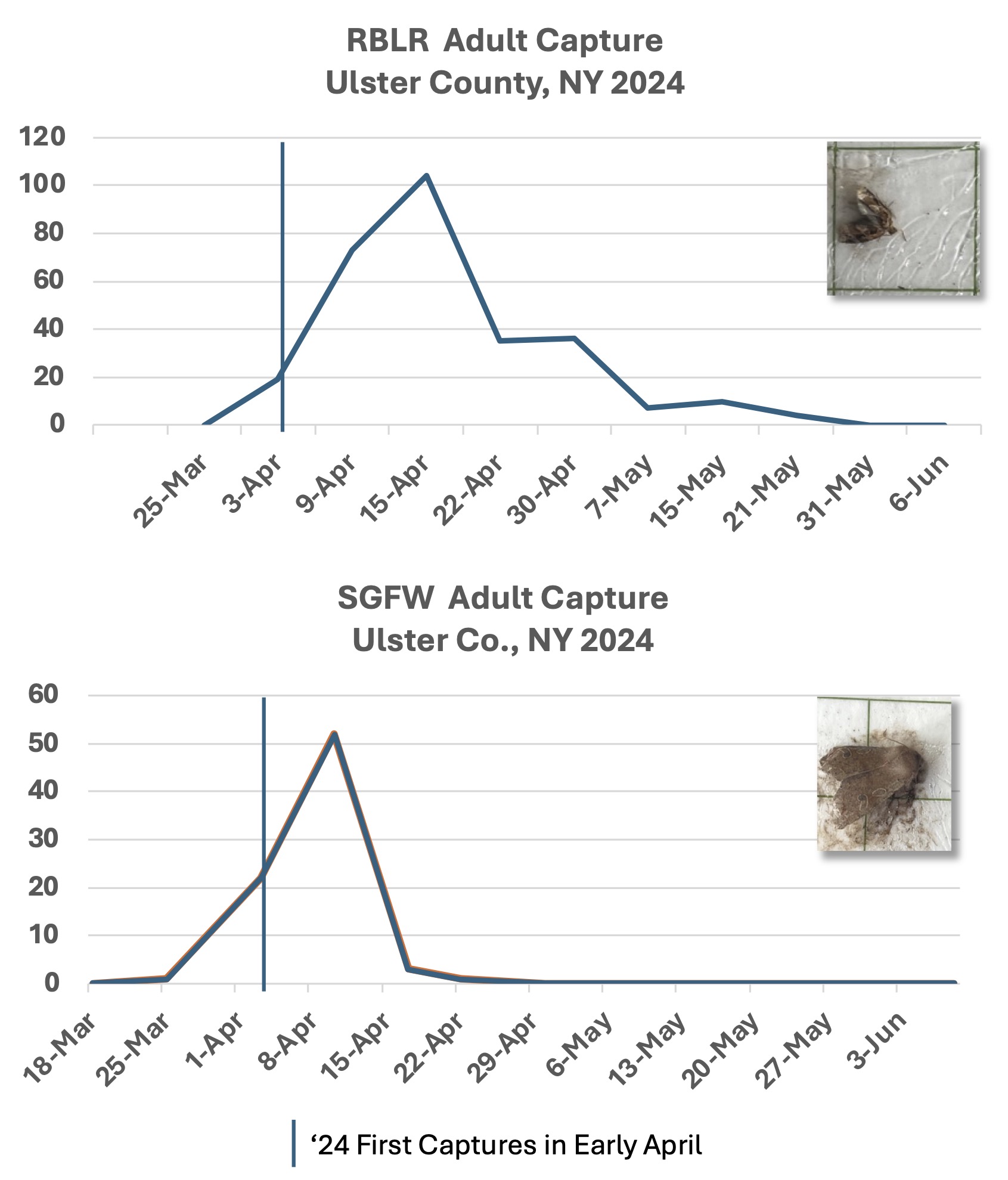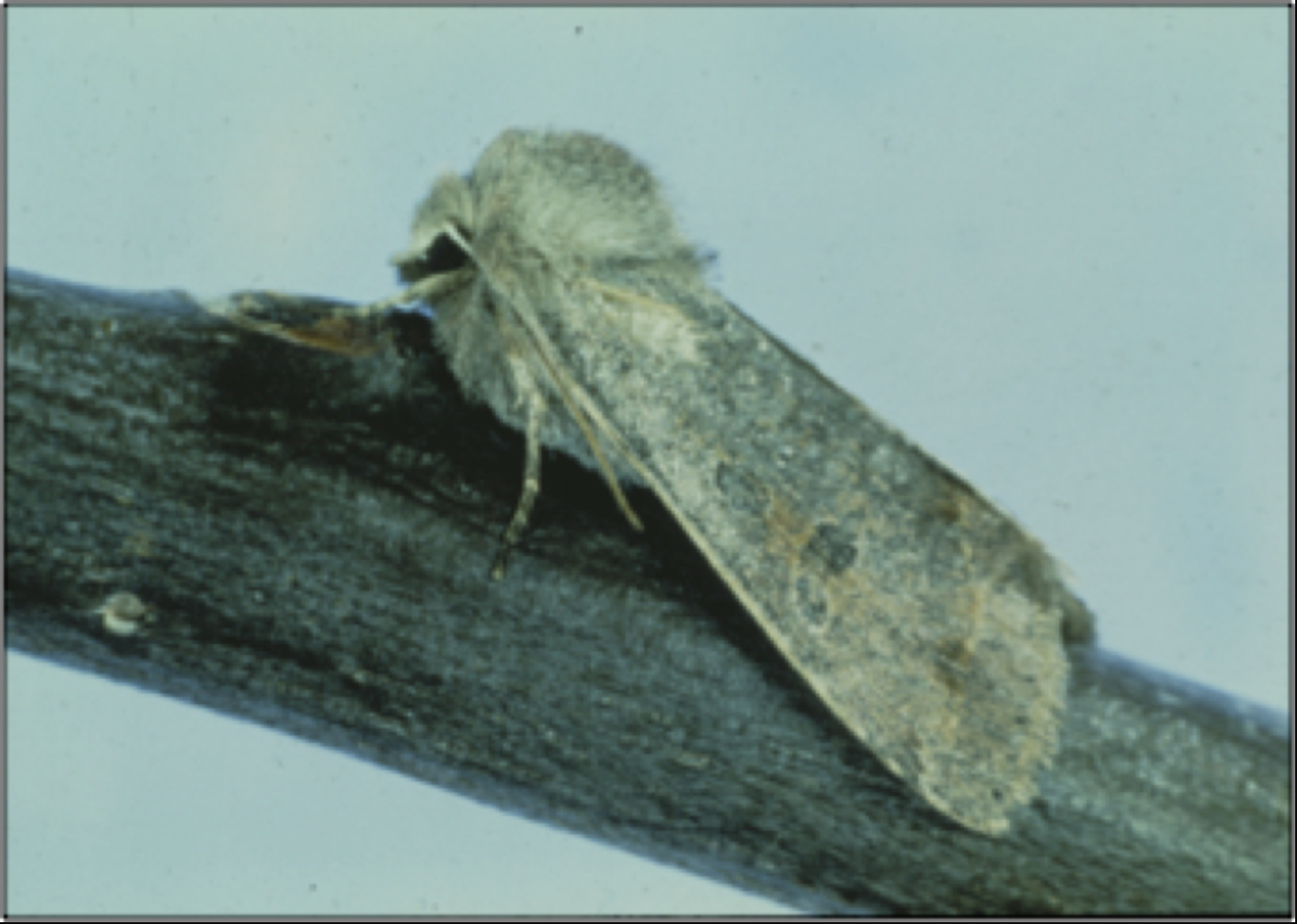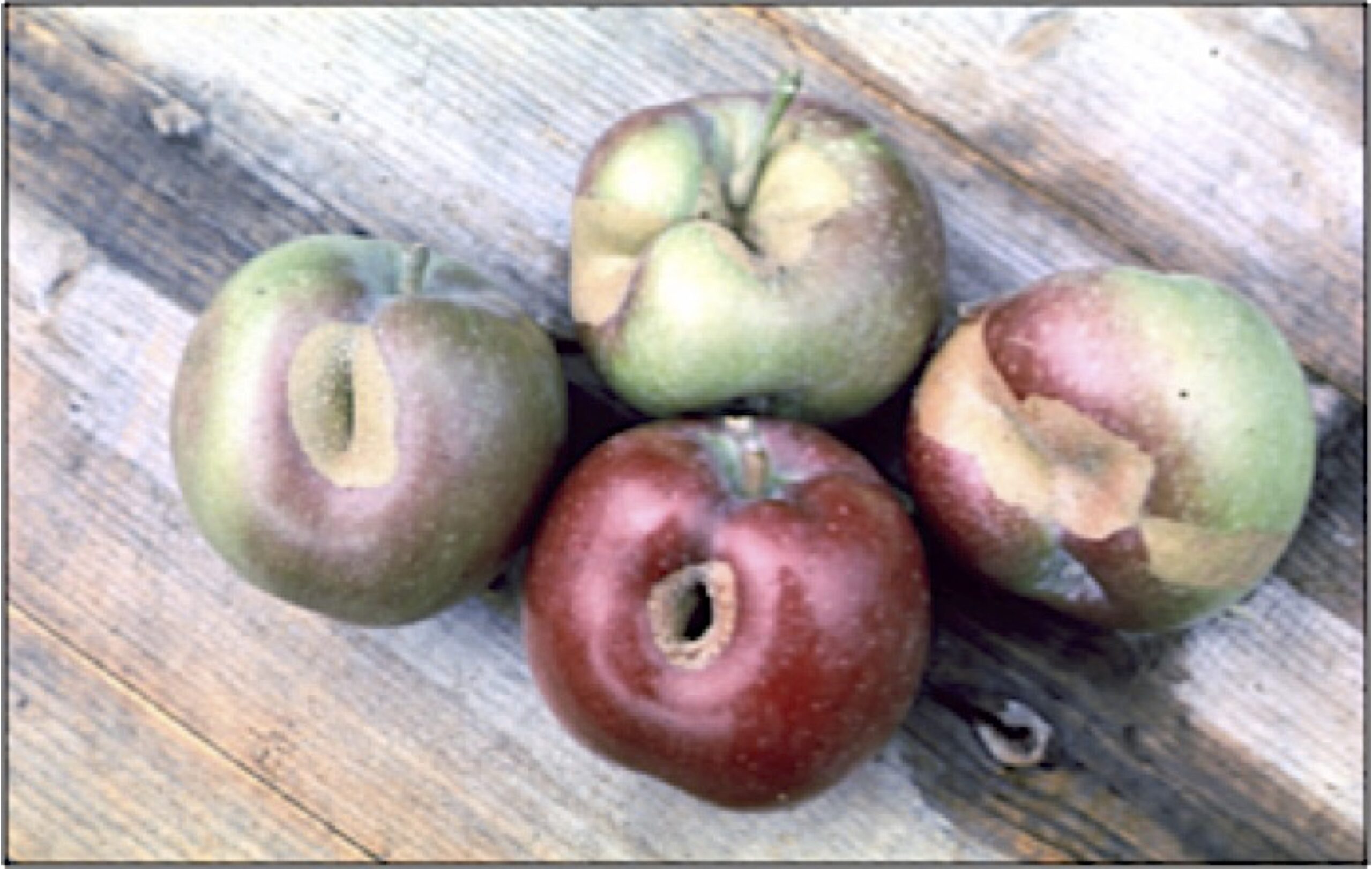Early Flyers: Pre-Bloom ‘Worm Management’ Considerations in ENY Apple Orchards. March 27th, 2025
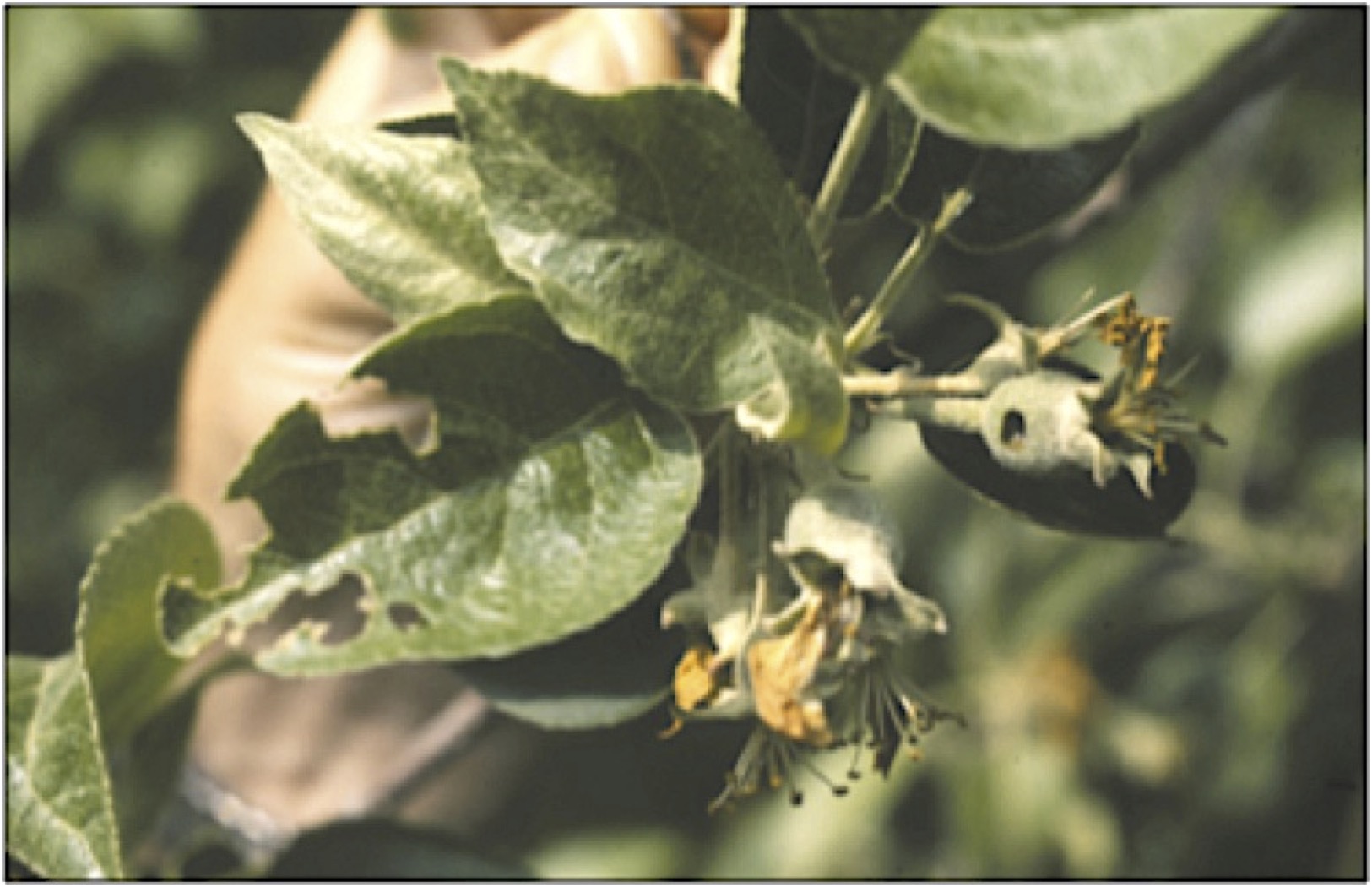
Summary: Typically, the early ‘worm’ complex found in commercial apple emerge during the delayed dormant through pre-bloom period. This first flight begins with the emergence of red banded leafroller (RBLR) and the green fruit worm (GFW) adults, vying for first emergence status. In the Hudson Valley, we traditionally have our first flight of GFW in early March. This season we had our first captures of RBLR and SGFW on the 17th of March during the warmest days of the year to date with highs hovering near 70F. Along with these adults, the overwintering Obliquebanded Leafroller (OBLR) larva are present in orchards within a protective case (hibernaculum) within small bark crevices or pruning scars. OBLR larval emergence is linked to tree phenology during tight cluster and pink, often found feeding in developing flower buds, flowers and developing fruitlets. With warmer daytime temperatures predicted over the next 7 days, increasing flight and insect emergence is forth coming.
As the Green Fruitworm Complex and Red Banded Leafroller populations continue their flight, beginning mating and egg laying with larval hatch in April, highlighting this pest complex may become important in Hudson Valley orchards as the season progresses. In orchards without pre-bloom insect management (Lepidopteran ‘worms’), injury to buds, terminal shoots and flowers may be found in the weeks to come.
This insect group is comprised of at least three different lepidopteran species whose larvae feed on the foliage, flowering parts and developing fruit of pear and apple that may be found during scouting efforts this spring. Although these insects tend to be sporadic pests in commercially managed orchards during the pre-bloom period, upon OBLR emergence during tight cluster to pink phenology stages, the combined insult to fruiting buds in years when high populations occur may produce economic injury requiring pre-bloom insect management. During this period, pollinators are foraging on drive-row dandelion and orchard edge fora. As such, evening applications with rapid dry time under conditions of low relative humidity and use of materials with low impact to pollinators should be included in pest management considerations.
Overview & Biology (OBLR): In the Hudson Valley it’s a fairly predictable event to catch the GFW adult flying during the warmest days of early March, yet the damage to fruit can be sporadic from year to year. This group, comprised of many species includes the speckled green Fruitworm, Othosia hibisci (Guenee), the Widestriped green Fruitworm (Lithophane antennata), and the humped green fruitworm (Amphipyra pyramidoides) among others that are aptly named after predominate physical features the larvae exhibit. Many other lepidopteran follow the GFW complex during the pre-bloom period and include the redbanded leafroller, spotted tentiform leafminer, oriental fruitworm, lesser apple worm, codling moth and emerging larval populations of overwintering obliquebanded leafroller (OBLR). The GFW and OBLR are of greatest concern to commercial fruit growers prior to and shortly after bloom with many control measures used against these two insects effective in managing the secondary lepidopteran pests.
The adult GFW complex are members of the Noctuid family and fly at night. Flight begins during apple bud development and peaks at tight cluster with flight completed by the pink stage.
GFW adults have a wingspread of about 1.5 inches. The forewings are grayish pink; each is marked near the middle with 2 purplish gray spots, outlined by a thin pale border with the hind wings lighter in color than the forewings.
Females begin oviposition on twigs and developing leaves when apples are in the half-inch green stage. GFW eggs are about 3/8” in diameter and 3/16” in height. GFW eggs are white with a grayish tinge and ridges radiating from the center . The egg takes on a mottled appearance shortly before hatch. A female will deposit only 1 or 2 at any given site, laying several hundred eggs from late March to mid-May in the Hudson Valley.
In the northern regions of the Champlain Valley and throughout the mid-Hudson Valley, the GFW can be a severe pest on early developing apple.
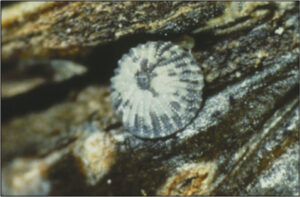
GFW eggs, often laid on bark, are white with a grayish tinge and ridges radiating from the center.
The GFW larva pass through 6 instars, the early stages possessing a grayish green body, brown head and thoracic shield. Mature larvae, about 1.5” in length, have a light green body and head. A number of narrow white stripes run along the top of the body with wider, more pronounced white line runs along each side. The areas between the stripes are speckled white. Early stages of larvae feed on foliage and flower buds, found inside rolled leaves or clusters.
Mature larvae will damage flower clusters during bloom, feeding on developing fruit and foliage 2 weeks after petal fall with peak populations during bloom . The fruit remaining on the tree will have both shallow and deeply indented corky scars at harvest, indistinguishable from obliquebanded leafroller injury.
Larva then drop to the ground, burrow into the soil to pupate and overwinter 2-4 inches into the soil to emerge the following spring as adults.
Overview & Biology (RBLR): We do see RBLR larva during the pre-bloom and as such, remains a potential economic pest of apples. Yet on its own, its not considered a major problem as at present, it is generally controlled by pre-bloom management for other pests.
RBLR will also feed on a wide range of plants, including weeds, flowers, forest and ornamental trees and shrubs. A pest of tree fruit, primarily apple, it can be found in plum, prune, peach, and cherry. In the Hudson Valley of New York, we find two generations of RBLR each year. A third brood can occur during warm seasons with larva observed in September.
Management for the pre-bloom complex including GFW complex, OBLR, Spongy (Gypsy) moth will also control RBLR.
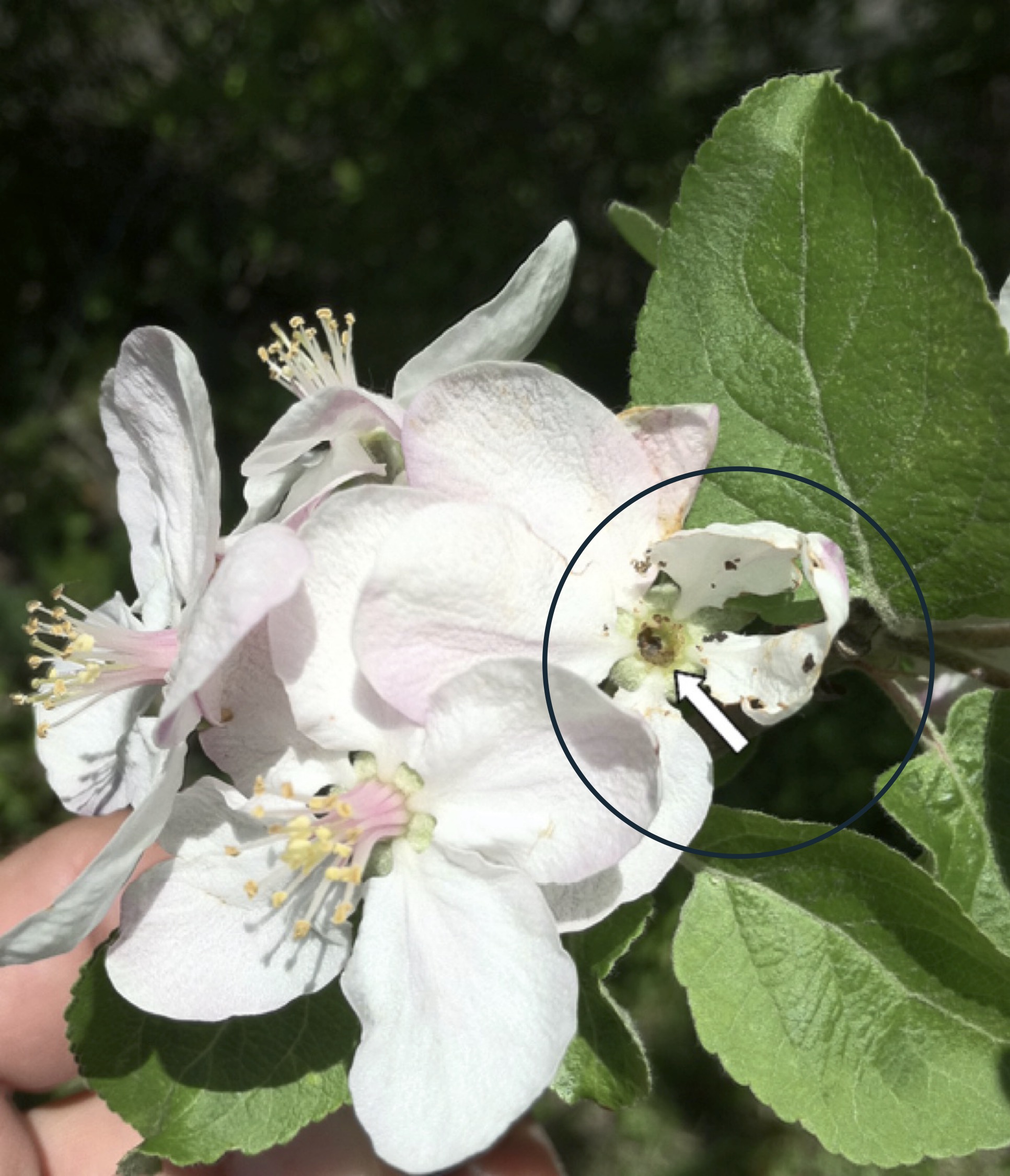
Control: In years of heavy infestation pressure from GFW, as much as 10% fruit injury can occur. Employing adult pheromone trap captures will provide growers with information on GFW presence and the onset of adult flight. Scouting for larva to determine levels of pest pressure should begin shortly after tight cluster. Although NY has not developed thresholds for this pest, a provisional threshold of 1 larva or feeding scar per tree has been used to begin applications in Massachusetts. A more conservative threshold should be applied in high valued apple varieties on dwarfing rootstock of high-density planting systems. If GFW populations historically cause economic injury to fruit, management should begin from tight cluster to pink to target the pre-bloom Lepidoptera complex.
The GFW complex and OBLR are less susceptible or resistant to most organophosphates. Pyrethroids Asana, Ambush / Pounce, Baythroid, Danitol, Warrior, in IRAC Class 3, tend to have highest efficacy against larva under cooler temperatures (<72 F). Generally, as temperature increases larva metabolize / detoxify pyrethroid chemistries more effectively, while OP’s, Carbamates and newer chemistries tend to be more stable and less susceptible to this phenomenon. The Bt products such as Biobit, Dipel, Javelin, and MVP (IRAC 11 B2) also have a low impact on beneficial mite and are very effective against OBLR and the GFW complex.
The Bt products can be used through bloom as needed and their use should be optimized employing multiple applications at 5-7 day intervals at the low-labeled rate. Intrepid (methoxyfen-ozide) (IRAC 18A) another reduced risk insecticide very effective against the larva, imitates the natural insect molting hormone and works by initiating the molting process. Intrepid is quite safe to birds, fish, and most beneficial insects. Proclaim (emamectin benzoate) (IRAC 6), a second-generation avermectin insecticide related to Agri-Mek, is also an excellent insecticide against the GFW complex while having a low impact on beneficial mites.
If European red mite (ERM) begin to emerge, Proclaim, when used with a penetrating adjuvant, would reduce early ERM populations. Altacor (chlorantraniliprole), Delegate (spinetoram) and Entrust (spinosad) (IRAC Class 5), have been used successfully against the surface feeding and internal Lep. complex. However, the placement for these materials has been predominately at the onset of hatch of the summer generation larva of OBLR and codling moth, continuing to provide excellent results in NY State under a rotational program of IRAC classes.
As we would be managing the overwintering OBLR larva at the same time as we would the control of GFW and RBLR, we need to consider these applications in light of multiple (2nd) generations of OBLR and Codling Moth (CM) management through out the remainder of the season for the purpose of reducing the risk of developing resistance in these populations.
